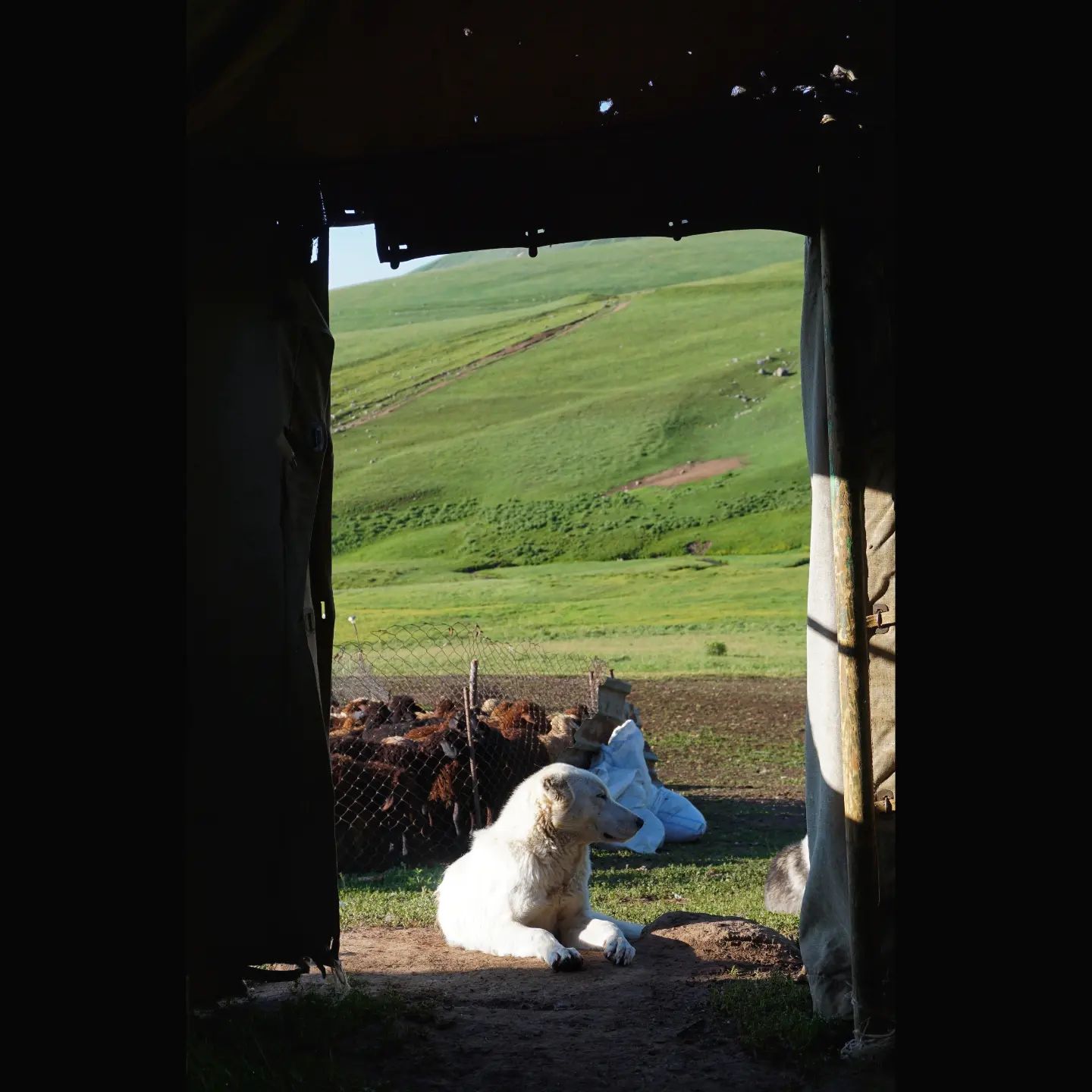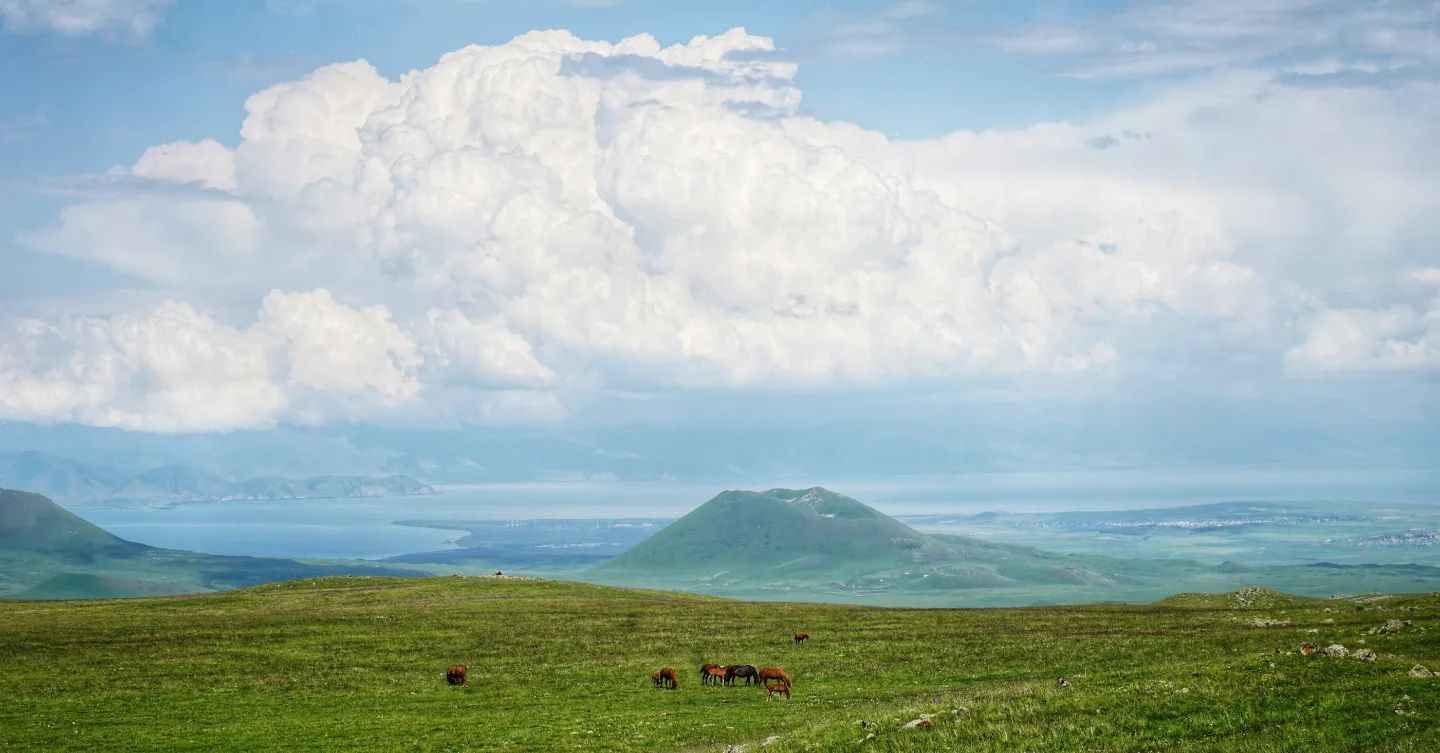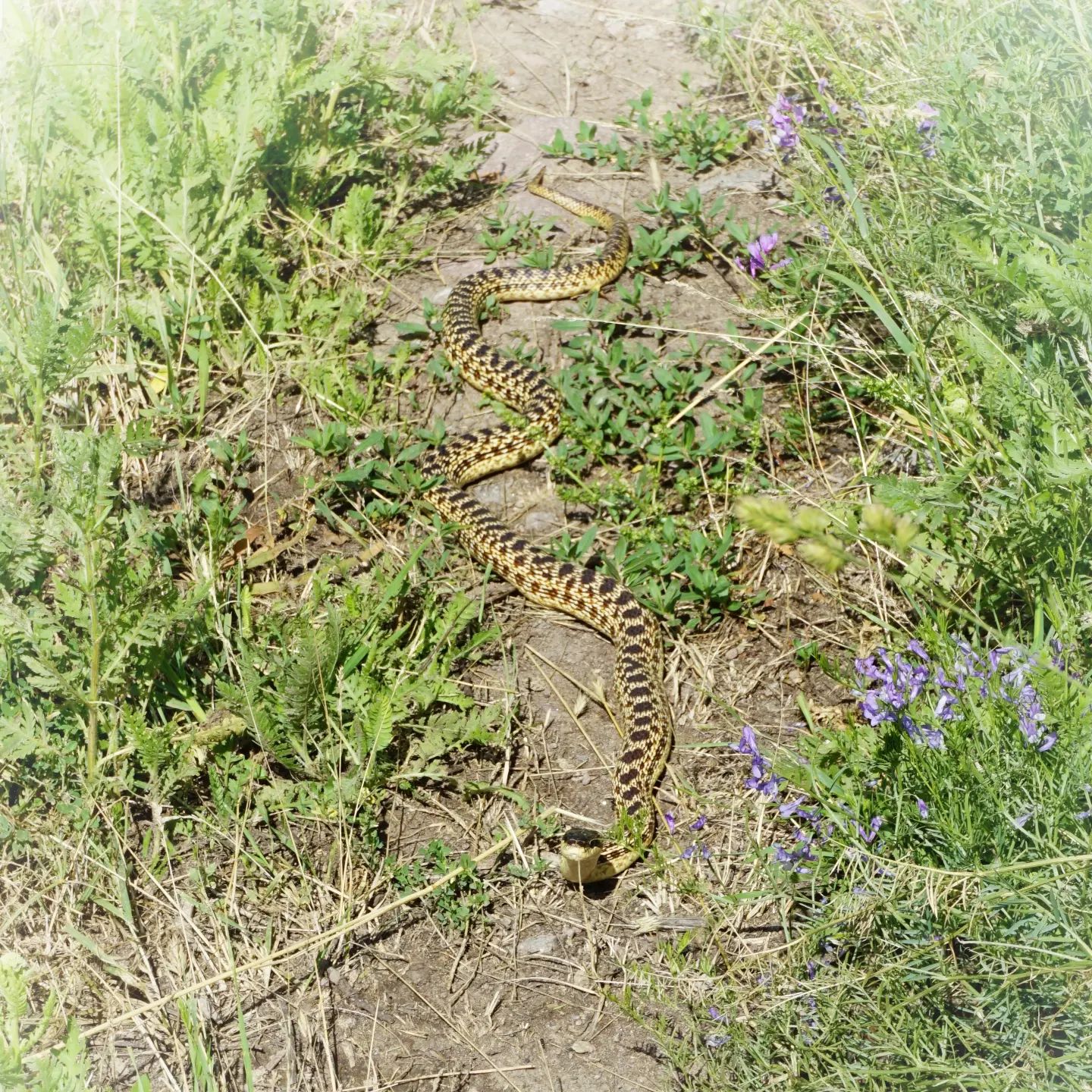Dogs
 Shepherds’ dogs are friendly once they see that their owners have welcomed you.
My only scary experiences on the TCT were encounters with dogs. Most commonly, it was the sheepdogs which guard the flocks of the summer herders. More than once, I ended up surrounded by baying hounds. I even met a few hikers who had been bitten. However, once I learnt how to deal with them, these canine face-offs became quite exhilarating.
Shepherds’ dogs are friendly once they see that their owners have welcomed you.
My only scary experiences on the TCT were encounters with dogs. Most commonly, it was the sheepdogs which guard the flocks of the summer herders. More than once, I ended up surrounded by baying hounds. I even met a few hikers who had been bitten. However, once I learnt how to deal with them, these canine face-offs became quite exhilarating.
It is important not to show fear. Step towards the dogs, bare your teeth, and shout at them, and they will retreat. Many will run away just at the sight of you bending down to pick up some stones (even if you are just pretending). Throwing the stones (even imaginary ones) will scare them even more; this is how the locals deal with them. Throughout the encounter, you should try to move towards the dogs’ owners, who are usually close by. They will calm the beasts and offer you some coffee.
There are other precautions you can take. Get the rabies vaccination. Don’t hike after dark. Travelling in a group is always safer. Be alert for dogs guarding houses or sleeping under cars. The official TCT map has notes about locations of nomad tents and aggressive dogs. When approaching these stretches, it may be worth picking up a stick (if you don’t use hiking poles). Some people brought pepper spray.
Men
Be wary of airport taxi drivers trying to charge more than they should. With that one exception, everybody I met on my TCT trip was kind and honest. They almost always offered me some food or drink, or asked “how can I help you?”. I did not feel afraid of being robbed, threatened, or tricked. However, some female solo hikers have reported insistent, unwelcome advances from men, which made them feel uncomfortable. As the TCT is now embedded and valued in the communities it passes through, the organisers have some power to follow up on these incidents, hopefully making them less common in future. I hope this won’t deter any female hikers—there were a few solo women in the small “Class of 2023”, including the redoubtable Dorota Szparaga, the first solo female TCT through-hiker.
Lightning
 Afternoon cumulonimbus clouds gather over Lake Sevan, portending lightning and hail. Note the volcanic cone and horses in the foreground, making up a typical Gegham scene.
As described in the weather section, summer in the Caucasus brings short, intense afternoon storms, often involving hail and lightning. You should be aware of the route ahead, and avoid tackling exposed sections when you can see a storm is imminent. Read advice on what to do if you do get caught out.
Afternoon cumulonimbus clouds gather over Lake Sevan, portending lightning and hail. Note the volcanic cone and horses in the foreground, making up a typical Gegham scene.
As described in the weather section, summer in the Caucasus brings short, intense afternoon storms, often involving hail and lightning. You should be aware of the route ahead, and avoid tackling exposed sections when you can see a storm is imminent. Read advice on what to do if you do get caught out.
River crossings
The TCT involves some river crossings. These are usually straightforward, but they can become impassable after heavy rain. If it seems too difficult, wait a day or two, or find a different route. If you’re inexperienced, read advice on how to cross rivers.
Wild animals
Almost anywhere in the world, if you tell local people you are going into the backcountry, they will look worried and tell you that wolves and bears are going to kill you. However, in the Caucasus and many other regions, it is the wolves and bears which have been killed. Those which remain are scared of humans, and you will be very lucky if you see them.
 A viper I saw on a sunny day in southern Vayots Dzor province, Armenia.
However, there is one type of animal to watch out for: snakes. Watch where you’re stepping, especially in warm weather.
A viper I saw on a sunny day in southern Vayots Dzor province, Armenia.
However, there is one type of animal to watch out for: snakes. Watch where you’re stepping, especially in warm weather.
Phone signal
I bought a local SIM card in Armenia (Viva-MTS) and Georgia (Magti). I haven’t tried using an eSIM yet, but this looks to be a convenient option for both providers. Phone and data coverage was cheap, fast, and ubiquitous: I was able to contact home almost every day along the TCT. For peace of mind, I also had a satellite rescue beacon, which also functioned as a lightweight low-battery GPS recorder (see the gear section). In some countries, it is still legal to “lock” phones to a specific provider, so you should make sure your phone is unlocked.
Languages
The Caucasus is one of the most linguistically diverse regions on Earth; it is sometimes called “Mountain of Tongues”. Learning some of these languages will enrich your hiking experience. The most useful will be Georgian and Armenian, in their respective countries. I recommend learning at least some basic phrases (although I also met hikers who were able to get by without even knowing the word for “Hello”). A good reference for these are the Wikivoyage phrasebooks (Georgian and [Eastern] Armenian). English is not particularly useful along the TCT, but younger people in less rural areas might speak it. I learnt basic Russian, which was helpful for most people over the age of 30 in both countries, especially so in Armenia. My favourite way to learn languages remotely is through video lessons on Preply, reinforced with the free flashcard software Anki. This is how I learnt Spanish—not perfectly, but well enough to make a Spanish version of this website!
If you really love languages, you could try to learn some of the minority languages. Along the TCT, I heard Yazidi Kurdish, Azerbaijani, Svan, and Abkhaz, and there are many more extant in the region.
Other useful sites
Here are a few sites I found helpful for travel in the Caucasus:
-
Wander-Lush
-
Detailed practical information and travel inspiration focused on Georgia, with regular updates.
-
HIKEArmenia
-
Comprehensive information about Armenia’s hiking trails.
-
Caravanistan
-
A site more focused on Central Asia, but with good information about border crossings.
-
Wikivoyage
-
The Wikipedia of travel, usually full of helpful information. (Don’t use Wikitravel, which is another version of the same site, with adverts and fewer articles.)
Final tips
My last tip is: don’t be in a rush. One of the joys of hiking in the Caucasus is random hospitality. So, when planning daily distances, leave extra time for these encounters.
 Shepherds’ dogs are friendly once they see that their owners have welcomed you.
My only scary experiences on the TCT were encounters with dogs. Most commonly, it was the sheepdogs which guard the flocks of the summer herders. More than once, I ended up surrounded by baying hounds. I even met a few hikers who had been bitten. However, once I learnt how to deal with them, these canine face-offs became quite exhilarating.
Shepherds’ dogs are friendly once they see that their owners have welcomed you.
My only scary experiences on the TCT were encounters with dogs. Most commonly, it was the sheepdogs which guard the flocks of the summer herders. More than once, I ended up surrounded by baying hounds. I even met a few hikers who had been bitten. However, once I learnt how to deal with them, these canine face-offs became quite exhilarating.
 Afternoon cumulonimbus clouds gather over Lake Sevan, portending lightning and hail. Note the volcanic cone and horses in the foreground, making up a typical Gegham scene.
Afternoon cumulonimbus clouds gather over Lake Sevan, portending lightning and hail. Note the volcanic cone and horses in the foreground, making up a typical Gegham scene.
 A viper I saw on a sunny day in southern Vayots Dzor province, Armenia.
A viper I saw on a sunny day in southern Vayots Dzor province, Armenia.